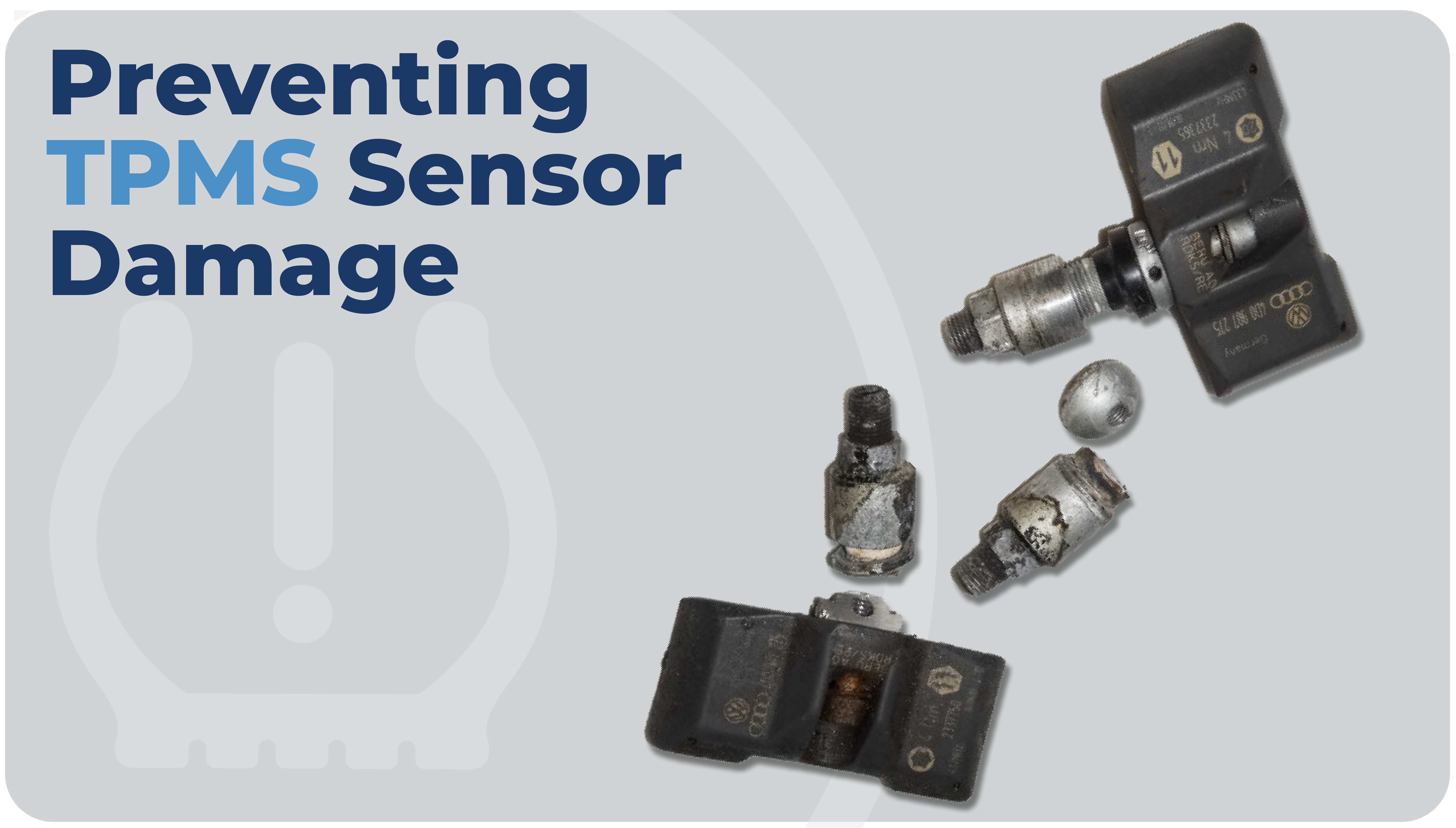 During tyre removal, TPMS sensors can get snagged by the sidewall of the tyre. These tips can help you prevent damage.
During tyre removal, TPMS sensors can get snagged by the sidewall of the tyre. These tips can help you prevent damage.
Have you ever damaged a TPMS sensor when mounting or dismounting a tyre? It happens because the typical equipment used to both mount and dismount a tyre to the wheel was, unfortunately, not designed with TPMS in mind. There are a few easy steps and precautions you can take to ensure the sensors are protected and your garage doesn’t incur extra cost during service.
During tyre removal, TPMS sensors installed in a rim can get snagged by the sidewall of the tyre. This often causes damage to the sensor body or the valve stem.
The below best practices are specifically for “direct” TPMS and valve-mounted sensors. “Indirect” TPMS does not utilise a sensor inside of each tyre, eliminating the possibility for damage during a tyre change. Banded sensors also generally don’t break during the tyre mounting and demounting process; however, these practices will still help you protect the valve stem from damage.
Safely demounting a tyre with valve-mounted TPMS:
- With an aluminum clamp-in stem, remove the nut from the stem and allow the sensor to fall inside of the tyre. This is by far the easiest way to avoid damaging the sensor in the dismounting process.
- If you are servicing a rubber snap-in stem, make sure that the valve is at the 12:00 or 6:00 position (90 degrees) when breaking the bead on both the front and back sides of the tyre. This will ensure the machine doesn’t crush the sensor on the opposite side of the valve inside of the tyre.
- When servicing a rubber snap-in stem, the valve should be under the dismount head when starting the turntable when removing the tyre from the rim. This will keep the tyre from hitting the valve when it snaps into place and protect the sensor.
Safely mounting a tyre with valve-mounted TPMS:
- Whether servicing an aluminum clamp-in or rubber snap-in valve, when mounting the tyre to the rim on the turntable, the valve should be placed just before the “traction point” (where the tyre meets the rim). This will make the tyre flip over the lip of the rim directly over the valve at the end, keeping the sensor protected in the process.
- Always lubricate rubber snap-in valves before pulling them through the valve hole. This step will help ensure proper placement of the valve and also give more protection during the pull-through process.
For all TPMS services:
- Always “Test Before Touch” to avoid liability issues with the customer. “Test Before Touch” is standard best practice that means if a vehicle comes into a facility with working TPMS, it must leave the facility with working TPMS. A garage cannot knowingly disable TPMS in the vehicles that it services.
- Always change the service kit, regardless if there is visible damage, to avoid comebacks for slow air leaks.
- Always remember that “programming a sensor” and “relearning the vehicle” are two different steps. A relearn will always need to be performed whether it’s an automatic or manual process (depending on the vehicle MMY).
Also, keep in mind that TPMS sensors vary in size and shape, making some sensors more susceptible to damage than others. In general, the larger a sensor is, the more likely it will get in the way during a tyre service and cause damage. To ensure your garage is taking a delicate approach to tyre removal, consider adding the best practices in this article to your TPMS standard operating procedure.
Article for Tire Review by Jacki Lutz, Global Head of Marketing Communications & Intelligence, July 2020
